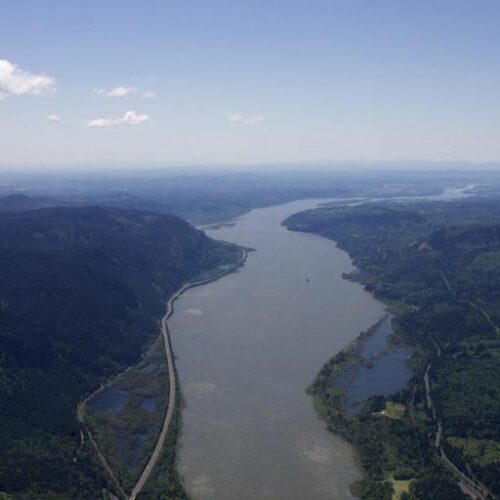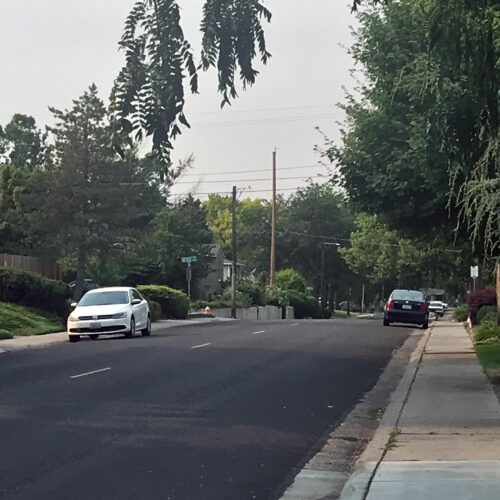
The Mountain Wildflowers Are Out (Earlier): How Climate Change May Affect Tourist Season At Rainier
READ ON
In summer 2015, University of Washington researchers drove up to the Paradise area at Mount Rainier. It was an unusual summer: there was a snow drought, which meant the snow in the area’s subalpine meadows disappeared in late May or early June, instead of July.
That’s why the group found themselves in the Paradise parking weeks earlier than normal, searching out the iconic wildflower blooms.
But they quickly noticed something else was unusual: the parking lot.
“If you ever go up to Paradise during the peak season, it’s just overflowing with people – most of them taking pictures of wildflowers,” researcher Ian Breckheimer said. “In 2015, during that peak of wildflower season, we could find parking. There were relatively few people up at Paradise during the peak season.”
They wondered why.
For his doctoral research, Breckheimer decided to look into it. He found that these snow droughts – which could become more regular if the climate continues to warm – lead to earlier and shorter wildflower blooms. When that happens, models showed visitors are out of sync with the best blooms.
“If we compared a lot of different years with different kinds of climates, years that had really low snowpack and early spring – like 2015 – peak visitor season was a few weeks later than peak wildflower season,” said Breckheimer, now a researcher at Rocky Mountain Biological Laboratory.
The report was published in the journal Frontiers in Ecology and the Environment.
Tracking The Season
Breckheimer used data scientists had been collecting on the mountain since 2010. He combined that with more than 17,000 publicly available photos on the file-sharing site Flickr. Then he tracked the wildflower season and visitor season.
“We assembled an army of undergraduates. We combed through each of those photos by hand, zoomed in on them and identified what wildflowers we could see in each of those photos,” he said.
The photos included GPS data, so researchers could track where the wildflowers were growing within about 30 feet.
These flower blooms are important parts of the ecosystem, Breckheimer said, including his favorites on Rainier: lupines.

The purple lupines of Mount Rainier National Park are a big feature — and picture subject — in the subalpine meadows above the park’s Paradise visitor area. CREDIT: Courtney Flatt/NWPB
“There’s really no place in the West that has that spectacular purple hillside display of lupines. Those are really important for the wildlife up there, too. The seeds are eaten by marmots and a bunch of birds in the fall,” he said. “The system would be really different, if you didn’t have those beautiful lupines.”
Shorter In 2015
The wildflower season was short in 2015. Some of the lupines stopped flowering and didn’t make seeds like they normally do.
The shorter season also meant fewer people saw peak blooms.
“A typical person going up to Paradise in 2015, was kind of too late to experience the meadows in their full splendor,” Breckheimer said.
This is one of the first studies to look at the relationship between the timing of changing ecosystems and how people use it. That could have an affect on managing the parks and letting visitors know about the best timing.
He said he was surprised by the constraints on visitor management in the park that prevented the park service from helping people know when to come see the blooms. (The iconic floral meadows are a big draw for more than one million visitors to the national park every spring and summer.)
For example, he said, the visitor center can’t be opened until seasonal workers are hired, typically after college classes are out for the summer. The Paradise visitor center opened in July in 2015; peak wildflower blooms were in June.
“I really think going forward, we’re going to need more research that tries to understand how climate change is altering the links between social systems and environmental systems,” Breckheimer said.
He said climate change is changing subalpine ecosystems. Trees encroach into the meadows, and the meadows aren’t able to sustain themselves on higher slopes. Breckheimer worries the meadows could be squeezed between the trees and the rock and ice uphill. By the end of the century, there could be a major decrease in wildflowers on Mount Rainier.
But, he said, it doesn’t have to happen.
“We still have time to control emissions, to get climate change under control,” he said. “If we have really aggressive policies statewide, nationwide and globally, we can avoid some of the outcomes that I’m really worried about as a scientist.”
Related Stories:

Boom Town: New Northwest-made podcast explores Western uranium mining and Hanford downwinders
Creator and host Alec Cowan’s shadow during a tour of the Sunday Mine Complex, a complex of five uranium mines in the Big Gypsum Valley near Paradox, Colorado, on Feb.

Preliminary agreement reached for a modernized Columbia River Treaty
The Columbia River west of the Gorge as it heads toward Portland and out to the Pacific Ocean. (Credit: Amelia Templeton / OPB) Listen (Runtime 1:01) Read After more than

Fly, you die: Northwest bees that fly during mild winter weather less likely to survive until spring
Brandon Hopkins, 42, with Washington State University, stands in front of the university’s bee colonies at a facility in Othello, Washington, where he and a team were examining the hives.















